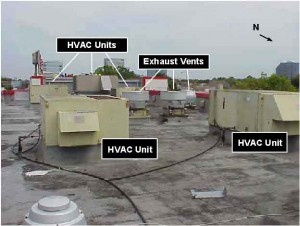July 26th, 2012 at 6:15 am
Solar Power International 12
Date: September 10-13, 2012
Location: Orange County Convention Center, Orlando, Florida
Presented by: SEIA (Solar Energy Industries Association), SEPA (Solar Electric Power Association)
One Event
Four Days. Ten ways Solar Power International delivers more of everything.
More than 1,100 exhibitors
More solar technologies than ever (340,000+ square feet of exhibit space)
More diversity than ever: Attendees from 100+ countries
More connections: 21,000+ professionals in attendance
More ideas: 50+ educational sessions, workshops and solar idea swaps
More networking opportunities and more innovation
More depth – Leading experts explore new materials and technologies and explain government policies that impact the solar roofing industry.
More excitement: Experts forecast a 30% annual growth rate in solar installations through 2016. See the technology that makes this astonishing growth possible and affordable.
Speaker
President Clinton – Sept. 12
President Clinton will describe the challenge of globalization, emphasize our growing interdependence and point the way toward a common future based on shared goals and values.
Supporting the Solar Industry
Solar Power International is produced by the Solar Energy Industries Association (SEIA) and the Solar Electric Power Association (SEPA). All proceeds from the event support the expansion of the U.S. solar energy market through both associations year-round research.
Register Now and Save – http://www.solarpowerinternational.com
Tags:
event,
orlando,
solar
February 24th, 2012 at 8:07 am
Coping is the covering piece on top of a wall which is exposed to the weather, usually made of metal, masonry or stone. It is preferably sloped to shed water back onto the roof. Metal flashing are accessory components fabricated from sheet metal and used to weatherproof terminating roof covering edges. Most frequently used as though-wall flashing, cap flashing, counter flashing, or step flashing.
ROOFING 101 – Metal cap flashing functions best when the top surface of the cap slopes inward to drain water toward the interior of the building. Avoid installation of fastners on the horizontal surface of the metal cap flashing.
For localized leaks you will need to replace damaged, missing or severely corroded sections or joint covers. Next refasten loose clips and any unsecured sections of metal using fastners of sufficient length and either of a larger diameter or fastnened to an adjacent location. Then you will need to clean and reseal any open joints with polyurethane sealant.
Tags:
cap flashing,
coping
 Comments Off on Coping – Metal Cap Flashing – Built-up Roof
Comments Off on Coping – Metal Cap Flashing – Built-up Roof -
January 24th, 2012 at 12:37 pm
Built-up Roof Blisters
Flat Roofing Repairs – Built-up Roofing Membrane
Blisters may need to be repaired if
- The blisters occur in areas of high traffic
- Membrane deterioration
- Excessive loss of surfacing (gravel)
- Blisters in laps which have reduced lap coverage
- Blisters have breaks, or cracking
Whether to remove, patch, or monitor blisters is a judgment call. Blisters that are keeping air in will keep water out, if this is the case it may be preferable to leave the blisters undisturbed. Should it be determined that blister removal is necessary, the following steps should be used.
- Remove all loose debris from the surface of the membrane or flashing to be repaired. The area should extend a minimum of 18 inches beyond the perimeter of the defect.
- If membrane surface has been flood coated and aggregate embedded, carefully spud the aggregate free from the surface and sweep clean.
- Carefully cut and remove the blistered material until good adhesion of the membrane is reached.
- Inspect insulation or deck for damage caused by water infiltration. Remove wet or damaged insulation and repair or replace as required. Properly attach or adhere new, dry insulation (consistent with the thickness of the existing insulation).
- Prime the surface of the BUR membrane with asphalt primer. Be sure not to overuse the primer, because it may harm the existing membrane and inhibit adhesion of newly applied membrane.
- Install the same number of plies as were removed in cold-applied adhesive or hot bitumen. Extend the bottom ply at least 6 inches beyond the area to be repaired and each exceeding ply at least three inches beyond the previous ply.
- Reapply the surfacing. For small repair areas, it is a common practice to apply the coating immediately after the membrane repair is made.
Tags:
built up roof,
roof blisters,
roof patch
November 1st, 2011 at 7:44 am
Many Leaks are Caused by Mechanical Rooftop Equipment
Who’s to Blame? Don’t Blame the Roofer
It is estimated that roughly 30% of leaks from commercial buildings originate from HVAC equipment, while only 20% of those leaks are actually roof related.
 Photo cited from – www.cdc.gov/niosh/fire/reports/face200013.html
Photo cited from – www.cdc.gov/niosh/fire/reports/face200013.html
Common leak spots for HVAC units
Holes and loose edges on HVAC fresh air intake hoods
Holes and poor weather stripping in HVAC air intake panels.
Loose or missing filter access panels on HVAC units.
Poorly designed filter access covers on HVAC ductwork.
Improperly sealed joints, seams and holes on HVAC ducts
The Roof is a Working Platform
For most construction trade – electrical, mechanical, plumbing, etc.
And many times the equipment itself is not waterproof. This often leads to roof leaks. Tenants incorrectly assume that all wet ceiling tiles mean roof leaks, but in reality it is often the rooftop equipment. So guess who gets the blame? Of course the roofer is called, while the mechanical, plumbing, and electrical contractors remain unaware of the equipment problems.
Other Common Causes for Commercial Building Leaks
25% – Skylight Louvers
15% – Windows
10% – Concrete Wall Cracks
Related Articles – Roof Leaks – Major Concern for Business
Tags:
commercial buildings,
roof leaks,
rooftop equipment


